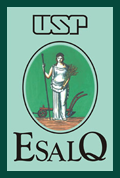1 - MOLECULAR PLANT-MICROBE INTERACTIONS 17 (8): 827-836 AUG 2004
Monteiro-Vitorello CB, Camargo LEA, Van Sluys MA, et al
Title: The genome sequence of the gram-positive sugarcane pathogen Leifsonia xyli subsp xyli
Author(s): Monteiro-Vitorello CB, Camargo LEA, Van Sluys MA, Kitajima JP, Truffi D, do Amaral AM, Harakava R, de Oliveira JCF, Wood D, de Oliveira MC, Miyaki C, Takita MA, da Silva ACR, Furlan LR, Carraro DM, Camarotte G, Almeida NF, Carrer H, Coutinho LL , El-Dorry HA, Ferro MIT, Gagliardi PR, Giglioti E, Goldman MHS, Goldman GH, Kimura ET, Ferro ES, Kuramae EE, Lemos EGM, Lemos MVF, Mauro SMZ, Machado MA, Marino CL, Menck CF, Nunes LR, Oliveira RC, Pereira GG, Siqueira W, de Souza AA, Tsai SM, Zanca AS, Simpson AJG, Brumbley SM, Setubal JC
Source: MOLECULAR PLANT-MICROBE INTERACTIONS 17 (8): 827-836 AUG 2004
Document Type: Article
Language: English
Abstract: The genome sequence of Leifsonia xyli subsp. xyli, which causes ratoon stunting disease and affects sugarcane worldwide, was determined. The single circular chromosome of Leifsonia xyli subsp. xyli CTCB07 was 2.6 Mb in length with a GC content of 68% and 2,044 predicted open reading frames. The analysis also revealed 307 predicted pseudogenes, which is more than any bacterial plant pathogen sequenced to date. Many of these pseudogenes, if functional, would likely be involved in the degradation of plant heteropolysaccharides, uptake of free sugars, and synthesis of amino acids. Although L. xyli subsp. xyli has only been identified colonizing the xylem vessels of sugarcane, the numbers of predicted regulatory genes and sugar transporters are similar to those in free-living organisms. Some of the predicted pathogenicity genes appear to have been acquired by lateral transfer and include genes for cellulase, pectinase, wilt-inducing protein, lysozyme, and desaturase. The presence of the latter may contribute to stunting, since it is likely involved in the synthesis of abscisic acid, a hormone that arrests growth. Our findings are consistent with the nutritionally fastidious behavior exhibited by L. xyli subsp. xyli and suggest an ongoing adaptation to the restricted ecological niche it inhabits.
KeyWords Plus: RATOON STUNTING DISEASE; LEAF SCALD DISEASE; ET-AL. 1984; AGROBACTERIUM-TUMEFACIENS; XANTHOMONAS-ALBILINEANS; TROPHERYMA-WHIPPLEI; XYLELLA-FASTIDIOSA; CAUSAL AGENT; GEN. NOV.; CLAVIBACTER
Addresses: Camargo LEA (reprint author), Univ Sao Paulo, Escola Super Agr Luiz Queiroz, Av Padua Dias 11, Piracicaba, SP BR-13418900 Brazil
Univ Sao Paulo, Escola Super Agr Luiz Queiroz, Piracicaba, SP BR-13418900 Brazil
Univ Sao Paulo, Inst Biociencias, Sao Paulo, BR-05508900 Brazil
Alellyx Appl Genom, Campinas, SP BR-13067850 Brazil
Embrapa Recursos Genet & Biotecnol, Brasilia, DF BR-70770900 Brazil
Inst Biol Av Conselheiro Rodrigues Alves, Sao Paulo, SP BR-04014002 Brazil
Univ Estadual Paulista, Fac Ciencias Agrarias & Vet, Jaboticabal, SP BR-14884900 Brazil
Univ Washington, Dept Microbiol, Seattle, WA 98195 USA
Ctr Citr Sylvio Moreira, Cordeiropolis, SP BR-13490000 Brazil
Univ Sao Paulo, Inst Quim, Sao Paulo, BR-05508900 Brazil
Univ Estadual Paulista, Fac Ciencias Agron, Botucatu, SP BR-18603970 Brazil
Inst Ludwig Pesquisa Sobre Canc, Sao Paulo, SP BR-01509010 Brazil
Univ Fed Mato Grosso Sul, Ctr Ciencias Exatas & Tecnol, Campo Grande, MS BR-79070900 Brazil
E-mail Addresses: leacamar@carpa.ciagri.usp.br
Publisher: AMER PHYTOPATHOLOGICAL SOC, 3340 PILOT KNOB ROAD, ST PAUL, MN 55121 USA
Subject Category: BIOCHEMISTRY & MOLECULAR BIOLOGY; BIOTECHNOLOGY & APPLIED MICROBIOLOGY; PLANT SCIENCES IDS
Number: 838RQ
ISSN: 0894-0282


